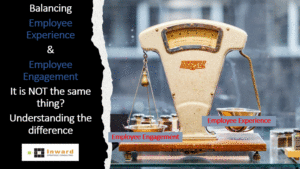Is crisis communications and change communications the same thing? Crisis communication is not the same thing as change communication. While both types of communication may be necessary during times of organizational change, they serve different purposes.
Change communication is a type of communication that is deployed when an organization is planning and implementing significant changes, such as a reorganization, merger, acquisition, or new strategy. The goal of change communication is to inform, engage, and persuade stakeholders about the change and its benefits.
Crisis communication is a type of communication that is deployed when an unexpected event or situation occurs that poses a threat to the reputation or operations of an organization. The goal of crisis communication is to minimize damage and protect the organization’s reputation by communicating accurate and timely information to stakeholders, such as employees, customers, shareholders, and the media.
While both types of communication require effective messaging and communication strategies, crisis communication tends to be more reactive and urgent, while change communication tends to be more proactive and planned. Additionally, crisis communication often involves addressing negative perceptions or misperceptions, while change communication focuses on promoting a positive message about the change.
When should a company deploy change communications? Companies should deploy change communications when they are planning to implement significant changes within the organization that will impact employees, customers, stakeholders, or the public. Change communications are designed to inform, engage, and persuade key audiences about the reasons for the change, its benefits, and how it will be implemented.
Effective change communications can take many forms, from memos and emails to campaigns and initiatives internally and externally. The key is to communicate clearly and effectively and to align the change with the company’s purpose, values, and mission.
Some examples of situations where change communications may be necessary include:
- Introduction of a new product or service: When a company launches a new product or service, it is important to communicate the features, benefits, and value proposition to customers and stakeholders.
- Mergers and acquisitions: When two companies merge or one company acquires another, it is important to communicate the reasons for the change, how it will impact employees and customers, and what the future holds for the new entity.
- Technology changes: When a company implements new technology, such as a new software system or hardware, it is important to communicate the benefits, how to use it, and any changes in processes that may result.
Effective change communications typically involve the following steps:
- Assessment: Understanding the needs and perspectives of key stakeholders, as well as the impact of the changes on the organization and its employees.
- Planning: Develop a change communications plan that outlines the messages, channels (media), and timeline for communication.
- Implementation: Communicating the changes through a variety of channels, such as in-person meetings, emails, videos, and other materials.
- Monitoring and Evaluation: Measuring the effectiveness of the change communications and adjusting as needed.
- Reinforcement: Continuously reinforcing the change messages and ensuring that employees understand and are equipped to support the changes.
Change communications is a critical aspect of any change management initiative such as rebranding, opening new markets, introducing the brand purpose and a new vision, adding new services, and mergers and acquisitions, as it helps organizations successfully implement changes, minimize disruptions, and achieve desired outcomes. It also assists in keeping the reputation up to-date and current. By engaging employees, customers, and other stakeholders transparently and effectively, organizations can build support, trust, and momentum for change.
Examples of effective change communications: These examples demonstrate the importance of effective crisis communication in maintaining trust and credibility during difficult times. Effective crisis communication requires transparency, empathy, and a commitment to addressing the issue and communicating regularly with stakeholders.
Some recent examples of effective change communications:
- Airbnb’s “Belong Anywhere” campaign: In 2021, home-sharing platform Airbnb launched a new brand campaign focused on the concept of belonging. The campaign included a video that showcased the company’s commitment to diversity, equity, and inclusion and highlighted the unique experiences that Airbnb hosts offer to travelers.
- Nike’s “Move to Zero” initiative: In 2021, Nike launched a new sustainability initiative called “Move to Zero” that aims to eliminate carbon emissions and waste from the company’s supply chain. The initiative was announced through a series of videos and social media posts that explained the company’s new initiative for sustainability and support climate change.
When should a company deploy crisis communications? When it is facing a situation or event that has the potential to harm its reputation, operations, or stakeholders. Crisis communications are designed to address unexpected or high-risk events that require immediate attention and communication with stakeholders.
Effective crisis communications typically involve the following steps:
- Prepare in advance: Companies need to have a crisis communication plan in place before a crisis occurs. This plan should outline roles and responsibilities, key messaging, and communication channels, and should be reviewed and updated regularly.
- Identify the crisis: The first step in responding to a crisis is to identify what has happened and assess the potential impact. This will help to determine the appropriate response and communication strategy.
- Communicate quickly and transparently: In a crisis, it’s important to communicate quickly and transparently with stakeholders, including customers, employees, investors, and the media. Provide clear, concise information about the situation and what is being done to address it, and be prepared to update stakeholders regularly as the situation evolves.
Some situations that may require crisis communications include:
- Product recalls or safety issues: If a company’s product is found to be defective or unsafe, it may need to deploy crisis communications to inform customers and stakeholders about the issue and how it is being addressed.
- Security breaches or cyber-attacks: If a company’s data or systems are compromised by a security breach or cyber attack, it may need to deploy crisis communications to reassure customers and stakeholders that their information is secure and that the company is taking steps to address the issue.
- Natural disasters or other emergencies: If a company is affected by a natural disaster or another emergency, it may need to deploy crisis communications to communicate with employees, customers, and stakeholders about the impact of the event and any actions being taken to respond.
- Service disruptions: If a company experiences a significant service disruption, such as a power outage or transportation stoppage, it may need to deploy crisis communications to inform customers and stakeholders about the issue and how it is being addressed. This can help to manage expectations and reduce frustration and confusion.
- Terrorist attacks: If a company is impacted by a terrorist attack, either directly or indirectly, it may need to deploy crisis communications to communicate with employees, customers, and stakeholders about the impact of the event and any actions being taken to respond. This can help to reassure stakeholders and demonstrate a commitment to safety and security.
Here are three recent examples of exceptional crisis communications:
- Johnson & Johnson’s response to COVID-19 vaccine concerns: In April 2021, Johnson & Johnson faced concerns about blood clots potentially linked to its COVID-19 vaccine. The company responded quickly and transparently, pausing the distribution of the vaccine and working with health officials to investigate the issue. Johnson & Johnson communicated updates to the public and provided detailed information about the risks and benefits of the vaccine, helping to maintain trust in the company and the vaccine.
- Target’s response to a security breach: In 2013, Target experienced a major security breach that exposed the personal and financial information of millions of customers. The company responded quickly and proactively, offering free credit monitoring to affected customers and launching an investigation into the breach. Target also communicated regularly with customers and stakeholders about the situation and took steps to improve its security measures to prevent future breaches.
- The Tylenol crisis communications case is a classic example of effective crisis management and communication. In 1982, seven people died in Chicago after taking Tylenol capsules that had been laced with cyanide. The incident received widespread media coverage and threatened the reputation of Johnson & Johnson, the manufacturer of Tylenol.
Johnson & Johnson’s response to the crisis was widely praised for its speed, transparency, and effectiveness. The company immediately recalled all Tylenol products from store shelves nationwide and worked with law enforcement officials to investigate the incident. Johnson & Johnson also established a toll-free hotline for concerned customers and communicated regularly with the media about the situation.
To restore public trust, Johnson & Johnson introduced tamper-resistant packaging for Tylenol and other over-the-counter medications. The company also launched a nationwide advertising campaign to reassure customers that Tylenol was safe to use.
The company’s swift and transparent response to the crisis helped to minimize damage to its reputation and restore trust in the Tylenol brand. The incident is often cited as an example of how to effectively manage a crisis through prompt action, transparent communication, and a commitment to customer safety.
In summary, The difference between crisis communication and change communication. While change communication is deployed when an organization is planning significant changes to the business, crisis communication is used when unexpected events or situations pose a threat to the reputation or operations of the company.
Effective change communication should involve assessment, planning, implementation, monitoring, and reinforcement of messages. Some examples of situations that may require change communications include mergers and acquisitions, restructuring, and technological changes. On the other hand, crisis communication may be necessary when a company is facing product recalls, security breaches, natural disasters, or service disruptions. Effective crisis communication requires transparency, empathy, and a commitment to addressing the issue and communicating regularly with stakeholders.
If you are responsible for communication in your organization, it is important to understand the difference between crisis communications and change communications and how to effectively deploy them. Take the time to assess your organization’s needs and develop a communication plan that addresses both types of communication. By doing so, you can build trust, maintain your organization’s reputation, and successfully navigate times of change and crisis.
About Inward
Inward Strategic Consulting is a 26-year-old management/creative consulting firm that helps clients achieve high performance by developing comprehensive business strategies and cultures aligned with their goals, processes, and resources. They specialize in internal/external branding strategies, change management, brand purpose, and market research. They offer proprietary methodologies such as Visioneering, Inward Marketing, Dialogue Marketing, Best Practice and Benchmarking, and Qualitative and Quantitative Market Research. They have worked with Fortune 100 companies including Walmart, McDonald’s, Aetna, City of Hope, and many others.
Allan Steinmetz CEO

























